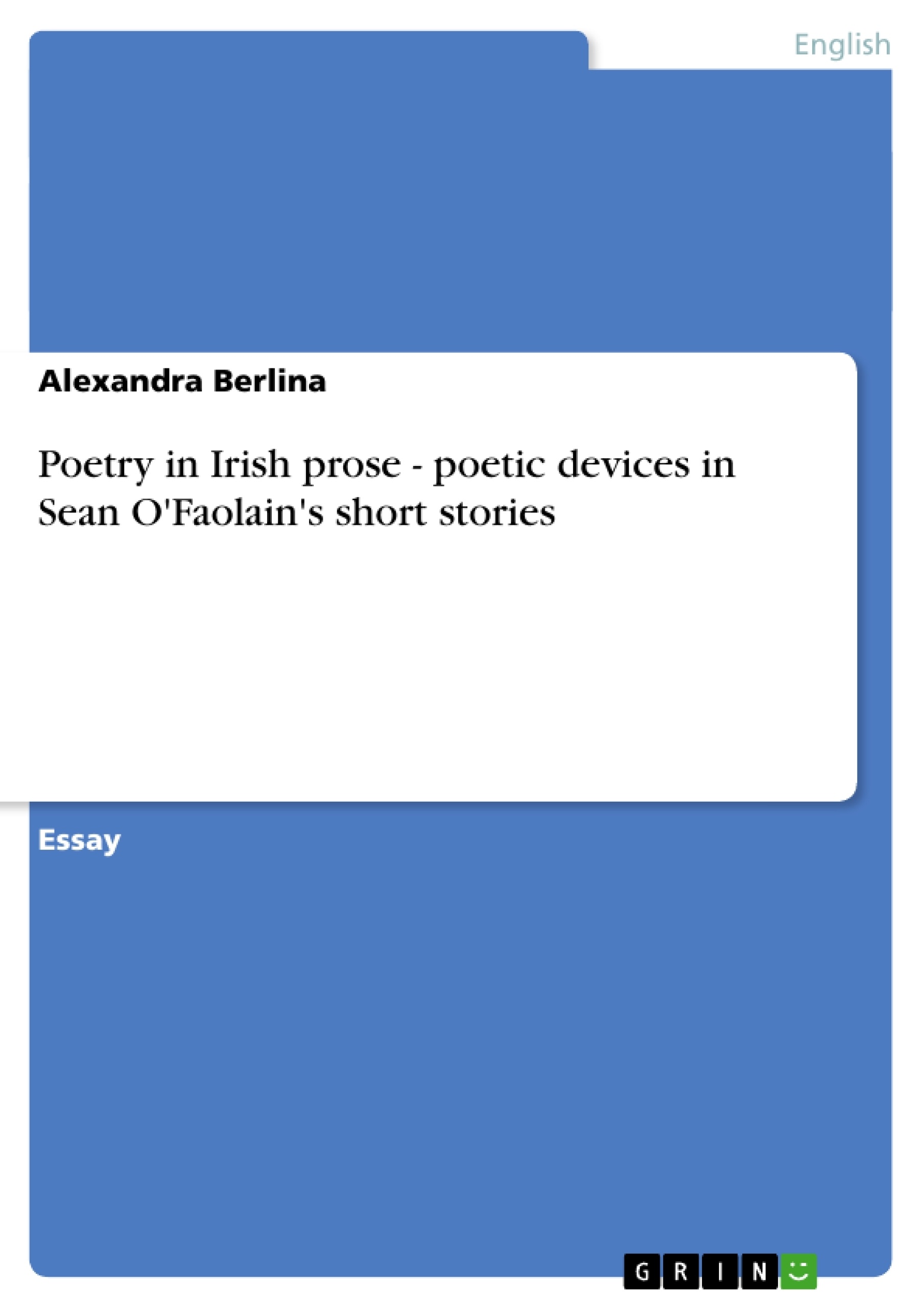It was simple to define poetry hundred years ago: a poem had to contain a measure, rhythm and rhymes. Nowadays, none of them is indispensable any more. So, what is poetry? In my opinion, poetry is primarily qualified by a concentrated language. I feel certain that there is a relationship between the German words “Dichte” (concentration, denseness) and “Dichter” (poet, writer). In a poem, every single word should be essential, no word random, nothing to delete or to add. There is only one literary genre where this tightness of language is almost as important – the short story. Sean O’Faolain wrote poems in his youth, and then he switched to short stories. It seems to me that he did not consider himself talented enough as a poet to publish his verses (maybe partly because of the experience he describes in his autobiography “Vive moi!” – as a student, he was laughed at for his naïve poem about Mother Ireland’s teeming navel), but still felt a desire to write poetry. Interestingly, the twenty-four years old hero of “How to write a short story” with whom the author seems to identify, had rested from writing poetry and was trying to write short stories. The short story is a genre that has a long tradition in Ireland and many Irish masters, but that is surely not the only reason why O’Faolain wrote mainly short stories. He must have felt the close relationship between them and verses. He wrote prose, but smuggled poetry into it. O’Faolain either placed his own poems into his stories (a few times, for example, in “Hymenial”), or quoted other poets there (far more frequently), or he made whole passages of his prose sound remarkably poetic – and this he did in almost every story. To analyze this phenomenon, I have chosen O’Faolain’s later stories (from 1970 on, the collections “The Talking Trees and Other Stories”, “Foreign Affairs and Other Stories” and the last stories published only after the author’s death). By the time he wrote them, he was not so susceptible for outer influences as in his youth. These works are more mature and original; they contain less romantic (and other) clichés than his early experiments. Therefore, these compositions are more interesting to study and to decompose into single metaphors, similes, alliterations etc – especially if there are many of them at once, as it often occurs in his stories. I did not use any secondary literature, because I wanted to study O’Faolain’s way of writing by myself.
Inhaltsverzeichnis (Table of Contents)
- Introduction - pages 3-4
- Cumulation of poetic devices - pages 4-12
- Cumulation of poetic devices in “Something. Everything. Anything. Nothing.” – p.4-7
- Cumulation of poetic devices in other short stories – p. 7-12
- Eyes and eyelids – pages 12-15
- Eyelids - p. 12
- Animal metaphors and similes for eyes and lids – p.13
- Women's eyes (clichés and non-clichés) – p. 14
- Men's eyes — p. 14-15
- Ideas' and things' eyes – p.15
- Animal similes and metaphors – pages 15-17
- Dogs, cats and mice – p.15-16
- Birds - p. 16-17
- Grotesque and funny images - p. 17
Zielsetzung und Themenschwerpunkte (Objectives and Key Themes)
This paper examines the use of poetic devices in the short stories of Irish writer Sean O'Faolain, specifically focusing on his later works published from 1970 onwards. The objective is to analyze how O'Faolain integrates poetic elements into his prose, exploring the frequency, purpose, and significance of these devices. The analysis focuses on specific examples from his stories, examining how O'Faolain employs a range of techniques including metaphors, similes, alliterations, and wordplay.
- The relationship between poetry and prose in O'Faolain's short stories
- The role of poetic devices in conveying meaning and enhancing the reading experience
- The analysis of specific examples of cumulated poetic devices in O'Faolain's works
- The exploration of visual imagery, particularly the use of eyes and eyelids as metaphors
- The significance of animal similes and metaphors in creating vivid and impactful descriptions
Zusammenfassung der Kapitel (Chapter Summaries)
The paper begins with an introduction, outlining the author's definition of poetry and the close relationship between poetry and short stories. It argues that O'Faolain, despite his early attempts at poetry, found a way to infuse his prose with poetic elements. The paper then delves into the analysis of poetic devices in O'Faolain's works, focusing on their clustering and significance. The first chapter examines the use of poetic devices in the story "Something. Everything. Anything. Nothing.", highlighting how O'Faolain utilizes parallelism, metaphors, and quotations to emphasize key themes and create a multi-layered reading experience. Subsequent chapters explore the use of visual imagery through eyes and eyelids, animal similes and metaphors, and other devices such as alliteration and wordplay.
Schlüsselwörter (Keywords)
The key concepts explored in this paper include poetic devices, short story, Sean O'Faolain, Irish literature, metaphors, similes, alliterations, parallelism, visual imagery, animal symbolism, and the relationship between poetry and prose.
- Quote paper
- Alexandra Berlina (Author), 2004, Poetry in Irish prose - poetic devices in Sean O'Faolain's short stories, Munich, GRIN Verlag, https://www.grin.com/document/25676



